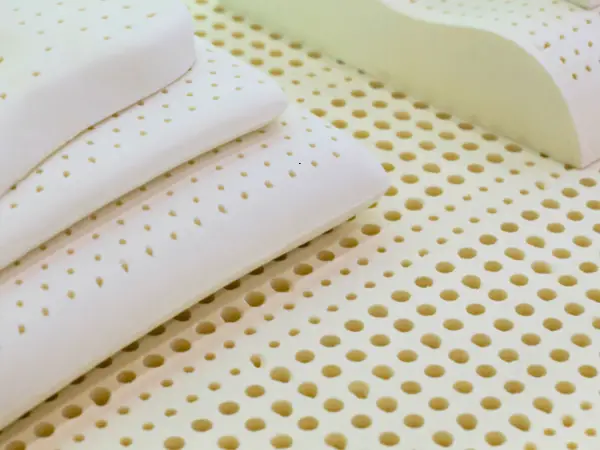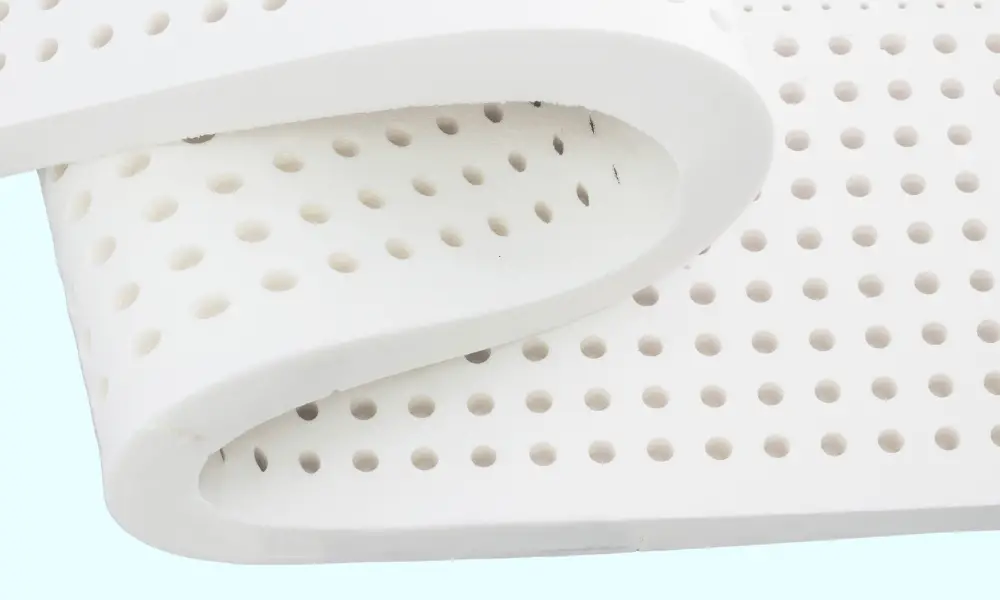Latex mattresses do not freeze, but extremely low temperatures can affect their firmness and comfort. Proper care and storage can help maintain optimal performance in colder conditions.
Latex mattresses are known for their durability and comfort. Many people worry about the effects of extreme cold on their sleep surfaces. Myths suggest that latex can freeze or suffer damage in low temperatures. Understanding the real impact of cold on latex mattresses is essential for protecting your investment.
The Impact Of Temperature On Latex Mattresses
Understanding the impact of temperature on latex materials helps clarify these concerns. This section will explore how cold affects latex and address common myths about freezing.
How Cold Can Affect Latex Material
Latex material is made from natural or synthetic rubber. It is designed to withstand various conditions. However, extreme cold can change its properties. Here are some important effects of cold on latex:
- Increased firmness: Cold temperatures can make latex feel firmer. This may affect comfort during sleep.
- Reduced elasticity: Cold can decrease the material’s flexibility. This may lead to less support.
- Potential cracking: In very low temperatures, latex can become brittle. This increases the risk of damage.
To better understand these effects, consider the table below:
| Temperature Range | Effect on Latex |
|---|---|
| Above 60°F (15°C) | Optimal comfort and flexibility |
| 40°F to 60°F (4°C to 15°C) | Increased firmness and slight loss of elasticity |
| Below 40°F (4°C) | Significant firmness, risk of brittleness |
Maintaining a stable temperature for your latex mattress ensures optimal comfort. It can help extend the mattress’s lifespan and performance.
Myths Vs. Facts: Can Latex Mattresses Actually Freeze?
Many myths surround the idea of latex mattresses freezing. Let’s clear up some common misconceptions:
- Myth 1: Latex mattresses can freeze solid.
Fact: Latex does not freeze like water. It may become firmer but not solid. - Myth 2: A frozen mattress will be unusable.
Fact: If it gets cold, the mattress regains its properties once warmed up. - Myth 3: Cold temperatures ruin latex mattresses.
Fact: While cold can affect comfort, it won’t permanently damage the material.
It is essential to understand that while latex can be affected by cold, it does not mean it will freeze. Proper care and storage can help maintain the quality of your mattress. Keeping your latex mattress in a controlled environment is crucial for longevity.
Signs Of Cold Damage In Latex Mattresses
Understanding the signs of cold damage is crucial. Knowing what to look for helps in maintaining your mattress’s quality.
What To Look For: Indications Of Damage
Detecting cold damage in latex mattresses is vital for long-term use. Here are some clear signs that indicate possible damage:
- Surface Cracking: Look for small cracks on the surface. This suggests the latex has become brittle.
- Loss of Resilience: If the mattress feels less springy, it may have been affected by the cold.
- Visible Deformities: Check for lumps or indentations. These can indicate structural issues.
- Unpleasant Odors: A musty smell can show that moisture has affected the mattress.
To help you identify damage better, here’s a simple table:
| Sign of Damage | Possible Cause |
|---|---|
| Surface Cracking | Cold temperatures causing brittleness |
| Loss of Resilience | Extreme cold affecting elasticity |
| Visible Deformities | Improper storage in cold conditions |
| Unpleasant Odors | Moisture accumulation due to temperature changes |
Regular inspections can help catch these issues early. Taking care of your mattress ensures it lasts longer.
Effects Of Cold On Comfort And Support
Cold temperatures can significantly impact the comfort and support of latex mattresses. Here’s how:
- Stiffness: Cold can make the mattress feel rigid. This reduces comfort during sleep.
- Pressure Points: A cold mattress may create uncomfortable pressure points. This affects sleep quality.
- Temperature Regulation: Latex tends to retain heat. Cold weather can disrupt this balance.
Consider these effects:
- Difficulty in Movement: Getting in and out of bed may become harder.
- Poor Sleep Quality: Uncomfortable sleeping conditions lead to restless nights.
- Increased Back Pain: Lack of support can result in back discomfort.
Understanding these effects helps in making informed decisions about mattress care. Warm your sleeping environment to maintain comfort levels.

Preventing Cold Damage To Your Latex Mattress
Let’s explore how to store your mattress properly and keep it warm during winter.
Ideal Storage Conditions For Latex Mattresses
Proper storage is vital for preserving the quality of your latex mattress. Here are the ideal conditions to follow:
- Temperature: Store in a temperature-controlled environment. Aim for 65°F to 75°F (18°C to 24°C).
- Humidity: Keep humidity levels between 40% and 60%. This helps prevent mold and mildew.
- Surface: Store the mattress flat. Avoid bending or folding it to prevent damage.
Consider using a protective cover. This shields against dust and moisture. Here’s a quick table showing the recommended storage conditions:
| Condition | Recommended Level |
|---|---|
| Temperature | 65°F to 75°F (18°C to 24°C) |
| Humidity | 40% to 60% |
| Position | Flat |
Regularly check the storage area. Make sure it stays clean and dry. This way, your latex mattress stays in excellent condition.
Tips For Keeping Your Mattress Warm In Winter
Keeping your latex mattress warm in winter helps maintain its comfort. Follow these tips to ensure a cozy sleeping environment:
- Use a Mattress Protector: A good protector provides extra insulation.
- Warm Bedding: Use flannel sheets and thicker blankets. This keeps warmth close.
- Adjust Room Temperature: Set your thermostat to a comfortable level. Aim for around 68°F (20°C).
- Space Heaters: Consider using a space heater in your bedroom. Make sure it’s safe and monitored.
Here’s a quick checklist to help you remember:
- Check your bedding for warmth.
- Inspect your mattress protector regularly.
- Maintain a steady room temperature.
These simple steps help your latex mattress stay warm and comfy throughout winter. A well-kept mattress provides better sleep, even in the cold.
Should You Worry About Freezing Temperatures?
Freezing temperatures might not damage your mattress, but understanding how cold affects it is essential. Let’s explore whether you should worry about freezing temperatures and what you can do to ensure your mattress stays in top shape.
Factors That Influence Mattress Performance In Cold Weather
The performance of a latex mattress in cold weather depends on several factors. Understanding these factors helps you make informed decisions. Here are the key elements to consider:
- Material Quality: High-quality latex resists temperature changes better than lower quality.
- Density: Denser latex provides better insulation and warmth.
- Mattress Thickness: Thicker mattresses generally offer more comfort and support.
- Humidity Levels: High humidity can affect how the mattress feels and performs.
Here’s a simple table to summarize:
| Factor | Impact on Mattress |
|---|---|
| Material Quality | Improves durability and comfort |
| Density | Enhances insulation and warmth |
| Mattress Thickness | Provides support and comfort |
| Humidity Levels | Affects feel and performance |
Cold weather may make your mattress feel firmer. It does not mean it is damaged. Understanding these factors helps you care for your mattress better.
Recommendations For Cold Climate Sleepers
For those living in colder areas, special care is needed for your latex mattress. Here are some practical recommendations to keep your mattress in great condition:
- Use a Mattress Protector: A waterproof protector adds a layer of insulation.
- Keep Your Bedroom Warm: Maintain a comfortable room temperature for better sleep.
- Rotate Your Mattress: Regularly rotating helps maintain even wear.
- Avoid Direct Contact with Cold Surfaces: Elevate your mattress with a base or platform.
Follow these tips to protect your mattress:
- Check the temperature in your bedroom regularly.
- Consider using heated blankets or mattress pads.
- Ensure proper airflow around the mattress.
- Store your mattress in a climate-controlled environment if not in use.
By following these recommendations, you can enjoy a cozy sleep experience, even in the coldest months. Your latex mattress will remain comfortable and supportive throughout the winter.
Conclusion
Latex mattresses are resilient and designed to withstand various temperatures. While extreme cold can affect their performance, freezing is unlikely to cause significant damage. Understanding these myths helps you care for your mattress better. Keep your mattress in a stable environment for optimal comfort and longevity.
Sleep well and rest easy!



